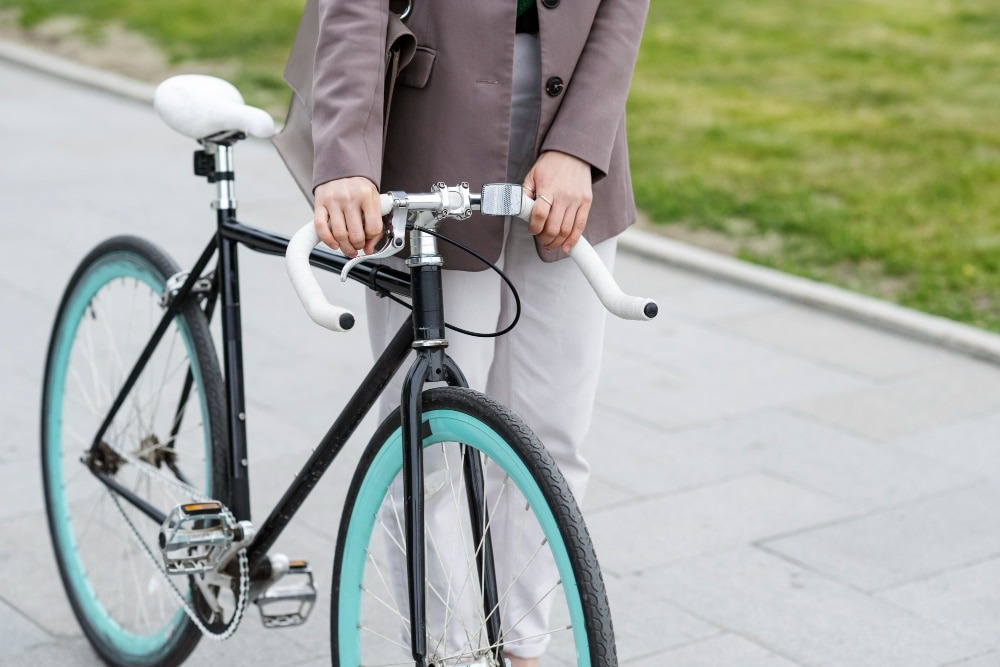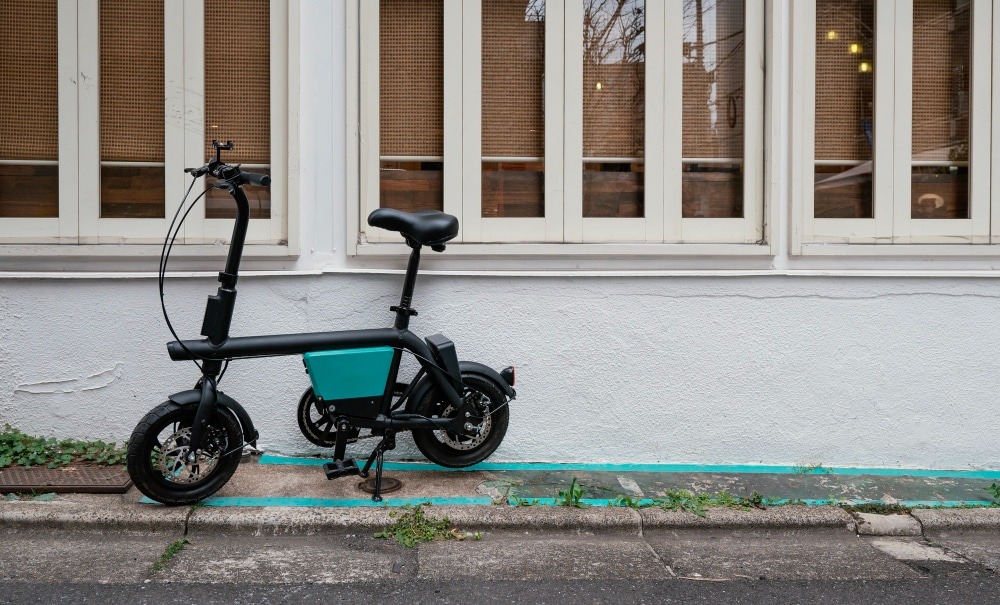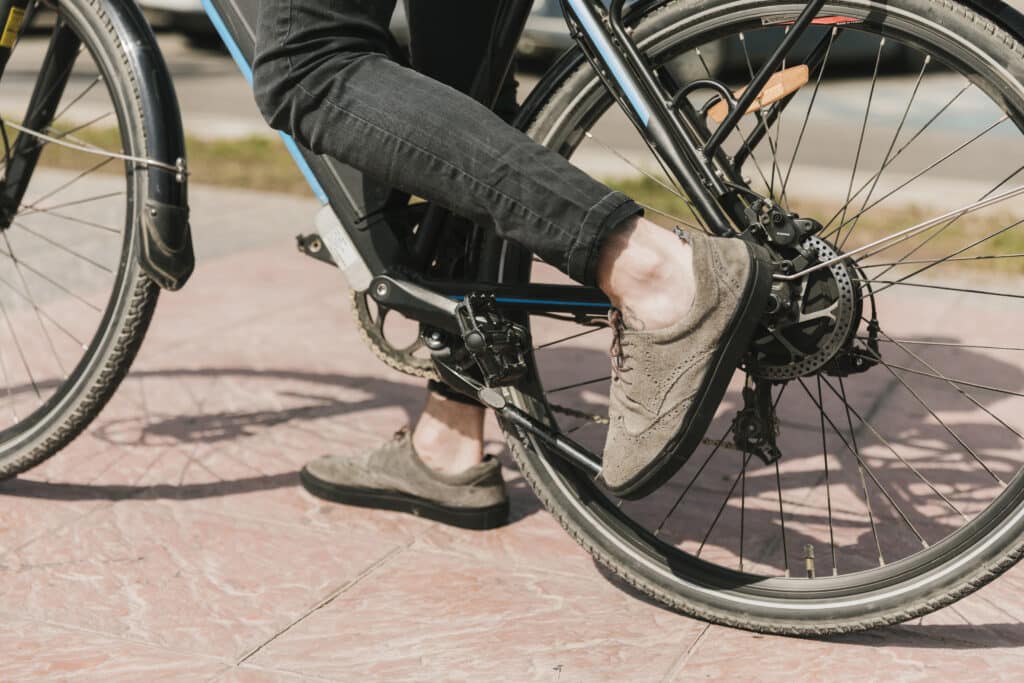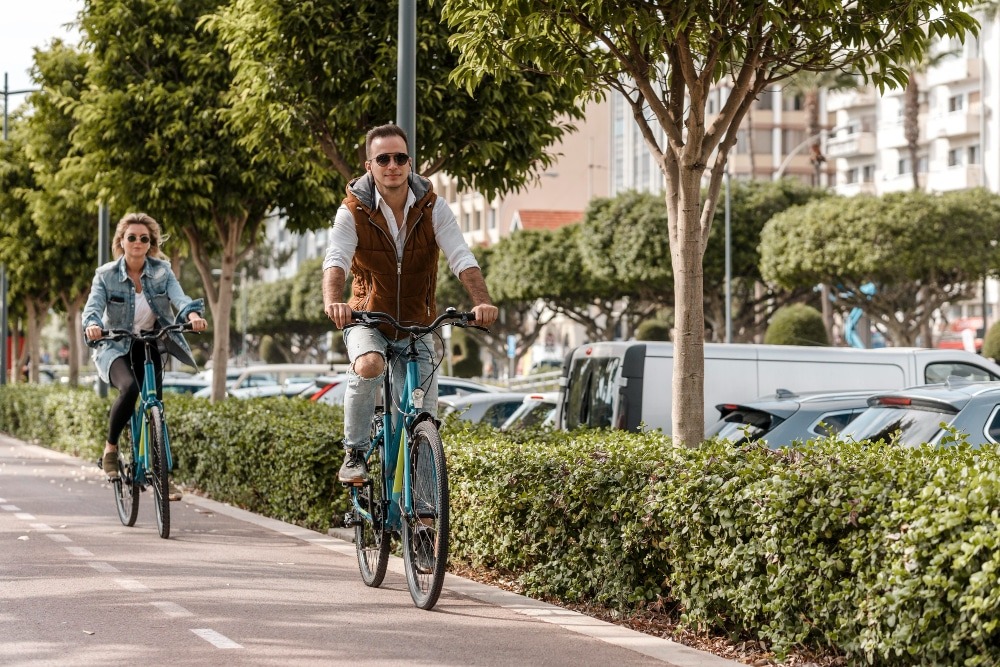Ever wondered, “How do e-bikes work?” Electric bikes, or e-bikes, are revolutionizing the way we commute by combining cutting-edge technology with eco-friendly transportation.
Powered by a motor and battery system, e-bikes provide pedal assistance that makes riding uphill or on flat terrain effortless.
In this article, we’ll delve into the mechanics of e-bikes, highlight their numerous benefits, and explain why they might be the best investment for your daily commute.
How Does an Electric Bike Work?

Electric bikes, or e-bikes, enhance your pedaling effort with the help of an electric motor and battery. This technology makes cycling less strenuous, allowing the bike to assist your pedaling or, in some models, to propel itself.
But how exactly does this work? Unlike traditional bicycles, e-bikes incorporate three key components: the battery, the motor, and a sensor that dictates how much assistance the motor provides based on your pedaling.
These bikes are not to be confused with motorcycles; their electric systems are designed for shorter, more sustainable rides without the pollution associated with gasoline engines. This makes e-bikes an eco-friendly alternative that still promotes physical activity, boosting cardiovascular fitness by requiring pedaling.
Despite having a motor, e-bikes do have speed limits set by the 2002 Consumer Product Safety Act, typically ranging from 20 to 28 mph, depending on the bike class.
Speaking of classes, e-bikes are categorized into three types in the U.S.
- Class 1: Motor assistance is provided only when you pedal up to 20 mph.
- Class 2: The motor can propel the bike without pedaling, but not beyond 20 mph.
- Class 3: Assistance is provided up to 28 mph, but only while pedaling.
Always check local regulations. Different states may have specific rules regarding the use of each class of e-bike, including age restrictions.
Electric Bike Components
An electric bike functions through the synergy of its key components: the motor, battery, and sensors. These elements enhance the biking experience, making it less physically demanding and more efficient for longer rides.
Motors
The motor is crucial in providing the necessary torque to assist pedaling efforts. Electric bike motors are placed in different positions on the bike, each offering unique benefits. The most common placements are:
- Front Hub: Positioned on the front wheel, providing a pull-forward effect.
- Rear Hub: Located on the rear wheel, it pushes the bike forward, which feels more natural for many riders.
- Mid-Drive: Situated at the bike’s center, it offers better balance and utilizes the bike’s gears to adjust the torque more efficiently, ideal for hilly terrains.
The choice of motor placement affects the bike’s handling and performance, with mid-drive motors generally providing more advanced torque for greater power output.
Batteries
The battery of an electric bike can vary widely in placement, type, and capacity, which influences the overall design and weight distribution of the bike. Commonly found either integrated into the frame or mounted externally, the battery’s position can affect the bike’s center of gravity and handling characteristics.
Charging an e-bike battery is straightforward and similar to charging a mobile phone, generally taking about five to six hours for a full charge.
Sensors
Sensors on an electric bike play a pivotal role in how motor assistance is deployed during a ride. There are two main types of sensors used:
- Cadence Sensor: This sensor activates the motor as soon as you start pedaling, providing immediate assistance for an easier start.
- Torque Sensor: More sophisticated than the cadence sensor, the torque sensor adjusts the motor’s output to match your pedaling force, offering a more natural riding experience and efficient power usage, especially beneficial for maintaining speed and performing maneuvers.
Each type of sensor offers a different riding experience, from the straightforward assistance of a cadence sensor to the nuanced, responsive support provided by a torque sensor.
Electric Bike Wattage: Power Output and Usage

Electric bike wattage, which refers to the power output of the motor, is a key factor in determining the bike’s speed and performance. Wattage, along with voltage and amp-hours, provides a comprehensive view of your bike’s capabilities. Understanding wattage and watt-hours is essential for gauging how long and how fast you can ride before needing a recharge.
Wattage is typically presented in two forms: peak and nominal power. Peak power represents the maximum output under ideal conditions, though it’s unlikely to be reached regularly due to inefficiencies like friction.
Nominal wattage, on the other hand, indicates the typical power the motor provides during normal operation, often about 75% of the peak power. This figure is crucial for practical use and when calculating watt-hours.
Watt-hours are calculated by multiplying the nominal wattage by the battery’s amp-hours, giving you a realistic estimate of how long your e-bike can operate on a single charge under typical conditions.
This metric is also vital for understanding the potential top speeds your e-bike can achieve. By knowing these details, riders can better manage their expectations and usage of their electric bikes, ensuring they have sufficient power for their needs.
Why Does Wattage Matter for an E-Bike?
Wattage is crucial for an electric bike as it directly influences the bike’s performance and battery life. Higher wattage means more power but also requires a battery capable of supporting that power for extended periods. This is vital for calculating how long you can ride and at what speed before needing a recharge.
Electric bikes calculate motor power in watts, derived from multiplying the battery’s voltage by the motor controller’s amps. For example, a 52-volt battery paired with a 20-amp controller results in an ideal power output of 1,040 watts. However, the more practical figure for everyday use is the nominal wattage, usually about 75% of the ideal, to account for energy losses, like friction, that occur during operation.
The relationship between wattage and watt hours is also key. Watt-hours, calculated by multiplying the battery’s voltage by its amp-hours, determine how long the bike can operate before the battery needs recharging. For instance, with a nominal wattage of 780 watts and 676 watts, the battery would last approximately 52 minutes at full throttle.
However, to extend battery life, it’s advisable to pedal more and rely less on the motor. Keep in mind that numerous factors, such as payload, speed, and tire pressure, also impact the battery’s efficiency and the bike’s overall range. Ideally, an e-bike should complement, not replace, your pedaling efforts, enhancing your riding experience while still requiring physical input.
Electric Bike Voltage: Enhancing Performance and Compatibility

Electric bike voltage is a key indicator of how much power the battery can deliver to the motor, directly influencing performance. Higher voltage allows more power to flow quickly, boosting your bike’s speed and responsiveness. Let’s break down why voltage is so vital and how it plays into e-bike compatibility and performance.
- Power Delivery: Higher voltage means the battery can send more power to the motor in less time, enhancing the bike’s ability to accelerate and maintain higher speeds.
- Voltage Ratings: Common voltages for premium electric bikes are 48 or 52 volts. These higher voltages can significantly improve performance, especially compared to lower-voltage systems.
- Compatibility: While most motors handle a specific range of voltage, some are designed to be backward compatible. For example, some Juiced Bikes models can operate with both 48-volt and 52-volt batteries, offering flexibility in battery choice.
- Regulatory Limits: Currently, 52 volts is the ceiling for standard electric bike batteries due to regulatory constraints. Pushing beyond this limit would classify the bike under higher voltage regulations, complicating design and use.
- Juiced Bikes Example: Each bike in the Juiced portfolio includes a 52-volt battery, showcasing the industry’s move towards higher performance standards.
Do E-Bikes Work Without Pedalling?
Yes, electric bikes can function without pedaling, but under UK law, they must utilize pedal power to be legally operated as e-bikes. This legal requirement ensures that using an electric bike still counts as exercise, as some pedal effort is necessary.
In the UK, the regulation is designed to maintain cycling’s exercise component while providing electric assistance. This means that the motor on an e-bike will only activate when the rider is pedaling, blending the traditional cycling experience with enhanced ease and reduced physical strain.
Thus, even though e-bikes offer motorized assistance, they still require rider involvement, making them a beneficial tool for physical fitness rather than just a leisurely ride. Pages dedicated to electric bike laws in the UK provide more details about specific rules and their implications.
Do Amp-Hours Matter for E-Bikes?

Yes, amp-hours (Ah) are crucial for determining how long your electric bike’s battery will last before recharging. Essentially, amp-hours tell you the battery’s capacity, much like how a gas tank’s size determines how far a car can travel before refueling.
Amp-hours indicate the energy a battery can store and deliver over time. For instance, a 20-amp-hour battery can supply one amp of power for 20 hours or two amps for 10 hours under ideal conditions. This measure gauges the battery’s endurance, helping riders understand how long they can use their e-bike on a single charge.
Energy Storage Comparison
Think of amp-hours like a gas tank where amps are the gas. A larger “tank” (higher amp-hours) means you can “drive” longer on a single “fill-up.”
Voltage and Amp-Hours Relationship
Together with the battery voltage, amp-hours contribute to the calculation of watt-hours, the total energy output a battery can deliver in one hour. This is critical for estimating how long the battery will last at maximum usage.
Charging and Amps
The amp rating also affects charging times. Chargers with higher amps can refill the battery faster. For example, a two-amp charger takes approximately 5.2 hours to charge a 13 amp-hour battery from 10% to 90%. In contrast, a faster seven-amp charger can reduce this time to about 1.5 hours.
Understanding amp-hours and other specifications like voltage and watts helps you compare different e-bike models and choose the best charger to suit your needs, ensuring optimal performance and convenience.
Conclusion
Electric bikes, commonly known as e-bikes, integrate sophisticated technology involving motors, batteries, and sensors to enhance traditional cycling, making it less strenuous and more efficient. These components work in harmony to assist riders in effortlessly cruising over flat terrains and conquering steep hills.
With regulations setting speed limits and classifications, e-bikes promote eco-friendliness and physical fitness. Understanding the nuances of wattage, voltage, and amp-hours is essential for optimizing e-bike performance and ensuring a reliable, enjoyable ride that aligns with individual commuting needs and lifestyles.
FAQs
Yes, cold temperatures can decrease an e-bike’s battery efficiency, reducing its range. It’s recommended to store the e-bike and battery in a warmer environment to help maintain optimal performance.
Electric bikes are equipped with a motor powered by a battery. When you pedal, the motor assists you, making accelerating and tackling hills easier. You can adjust the level of assistance, giving you control over how much effort you want to put into pedaling.
Electric bikes offer increased convenience, especially for commuting over hilly terrains or long distances. They promote physical activity, are environmentally friendly, and can be a fun and affordable transportation option.
When selecting an electric bike, consider your needs, such as the distance you plan to travel, your budget, whether you prefer pedaling or using a throttle, and how much cargo you need to carry. Various types, such as commuter, utility, and mountain electric bikes, are tailored to different needs.
The duration of an electric bike’s battery life varies widely based on the battery’s capacity and the bike’s usage. For example, if you have a battery rated at 13 amp-hours and use it consistently at high power, it might last for a shorter period compared to using it sparingly on flat terrain.






